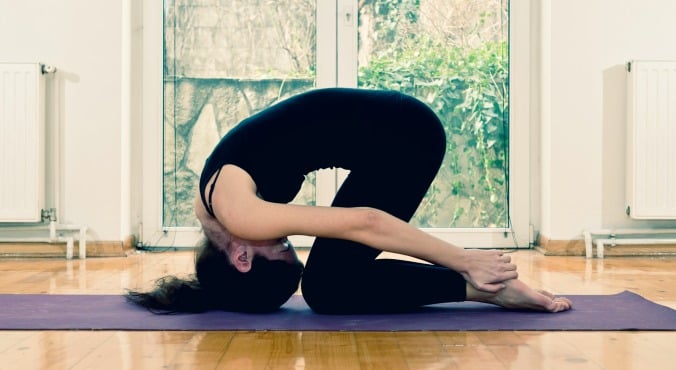
Image via iStock.
Combining a supposedly relaxing exercise with the intense atmosphere of a sauna may not be everyone’s idea of a good time, but Bikram yoga has proved a fast favourite amongst yogis.
It claims to improve mindfulness, flexibility, strength, muscle tone and general fitness. It’s hot. It’s hard. It’s very, very sweaty. But then again, if you don’t leave the class covered head to toe in your own (and others) perspiration, does it really count as exercise?
RELATED: There’s hot yoga. Hip hop yoga. Prenatal yoga. And now there’s hangover yoga
A new study has revealed that practicing yoga in a hot room can raise internal body temperatures and heart rates to levels that may be dangerous for some.
“The dramatic increases in heart rate and core temperature are alarming when you consider that there is very little movement, and therefore little cardiovascular training, going on during class,” says study author Emily Quandt. (Post continues after gallery.)
Celebrities doing yoga.
A Bikram class is typically 90 minutes long and is confined to a room that is around 40 degrees Celsius and 40 per cent humidity.
The study, sponsored by the American Council on Exercise and published in the Gundersen Medical Journal, looked at 20 regular Bikram participants, seven males and 13 females, between the ages of 28 and 67 years-old. Each participant swallowed a core body temperature sensor and was given a heart rate monitor to wear during the class
RELATED: “I’m that person in your yoga class who farts. And I’m not apologising for it.”





























































































